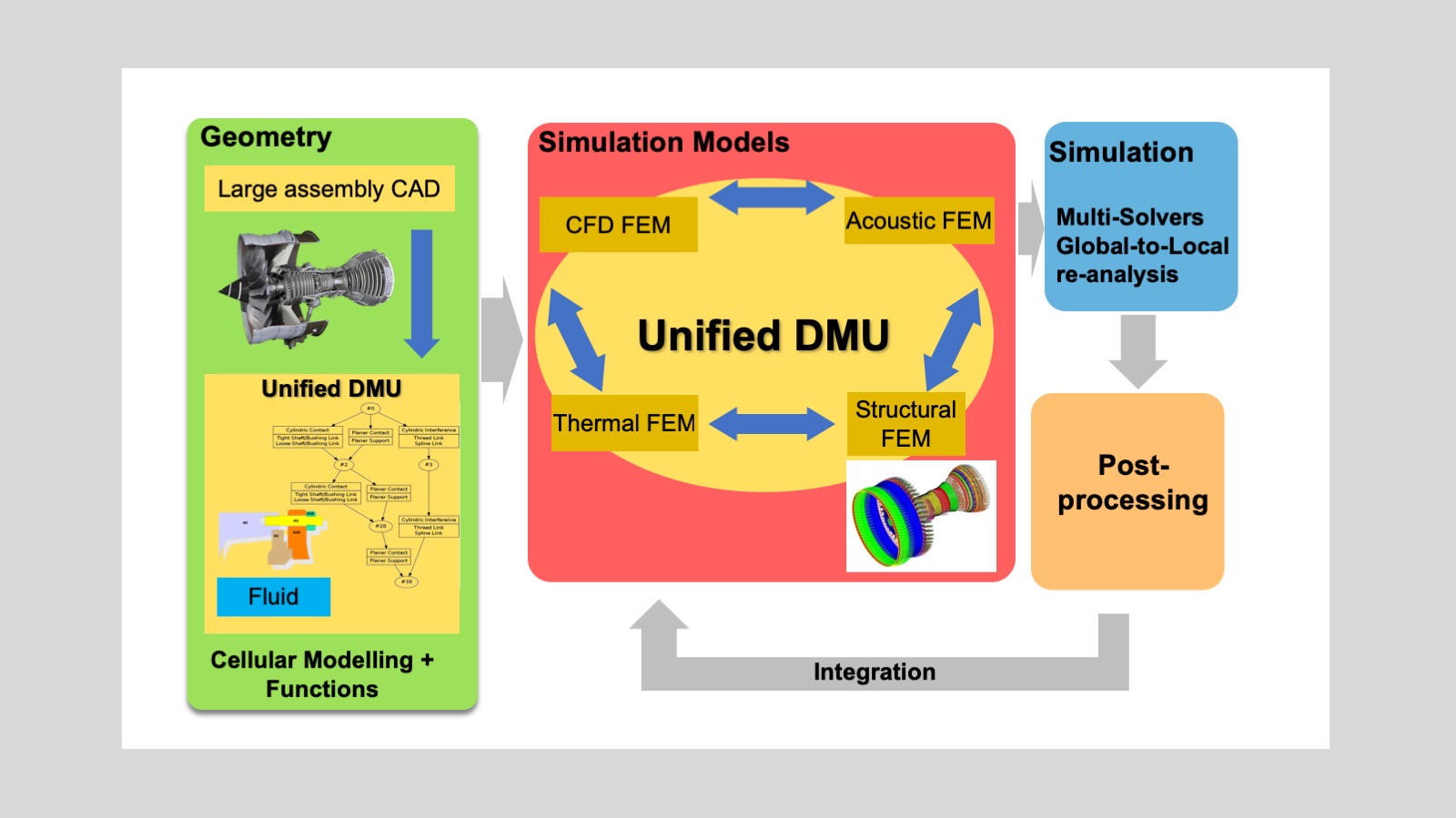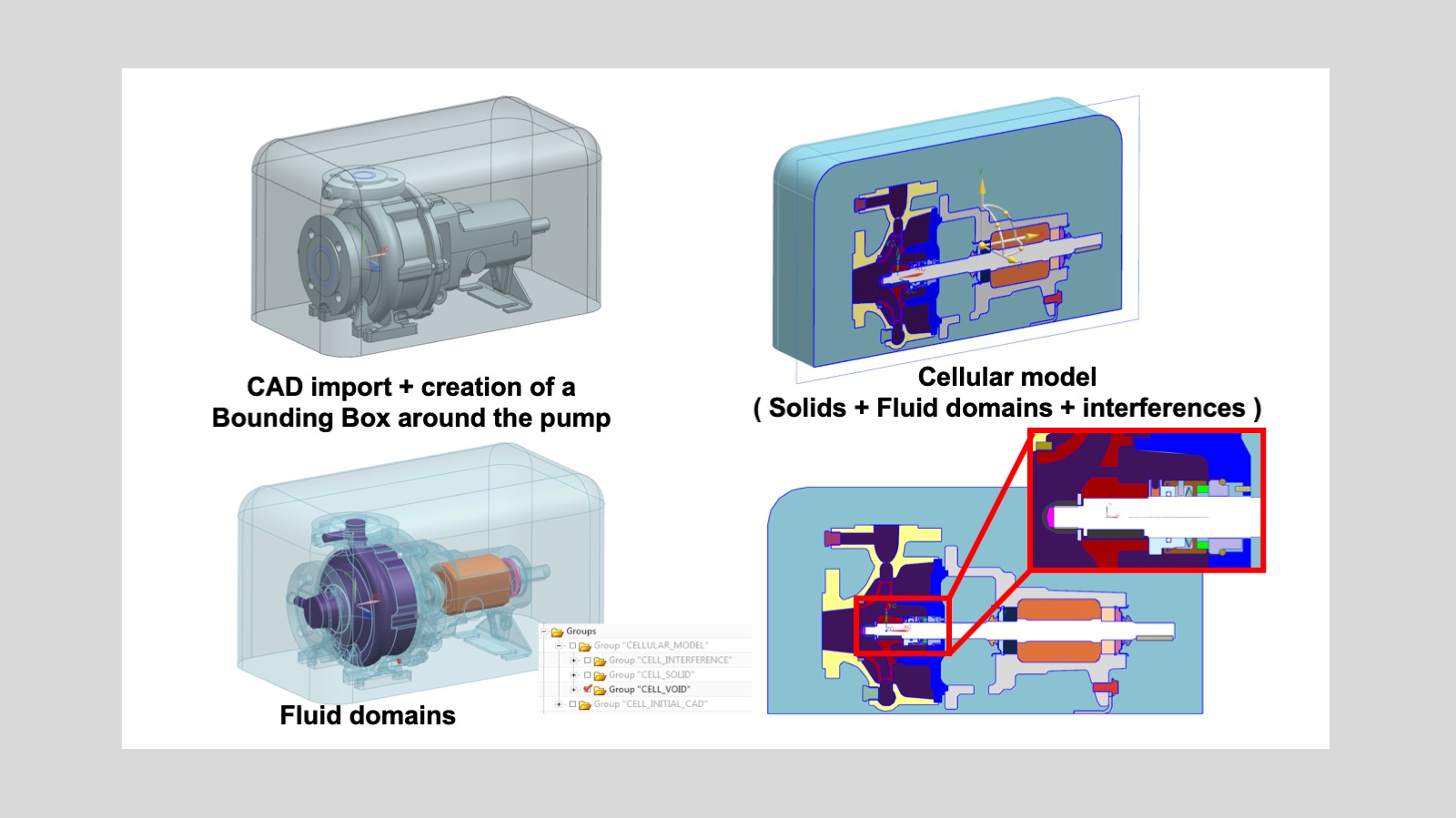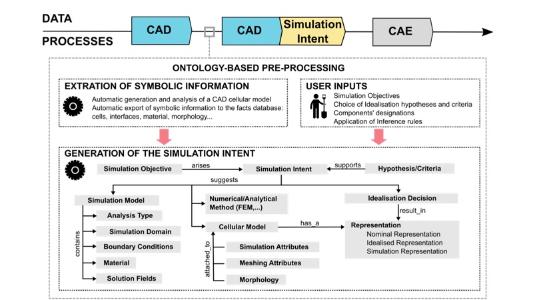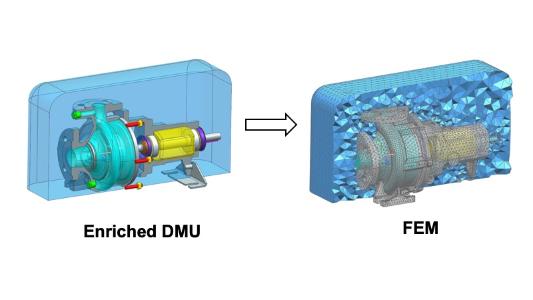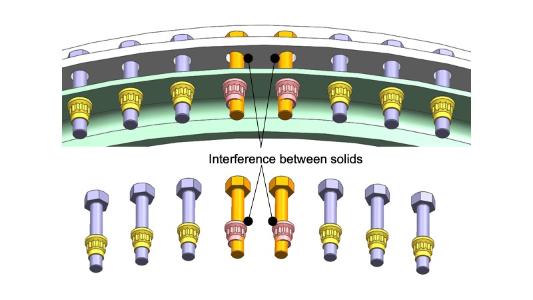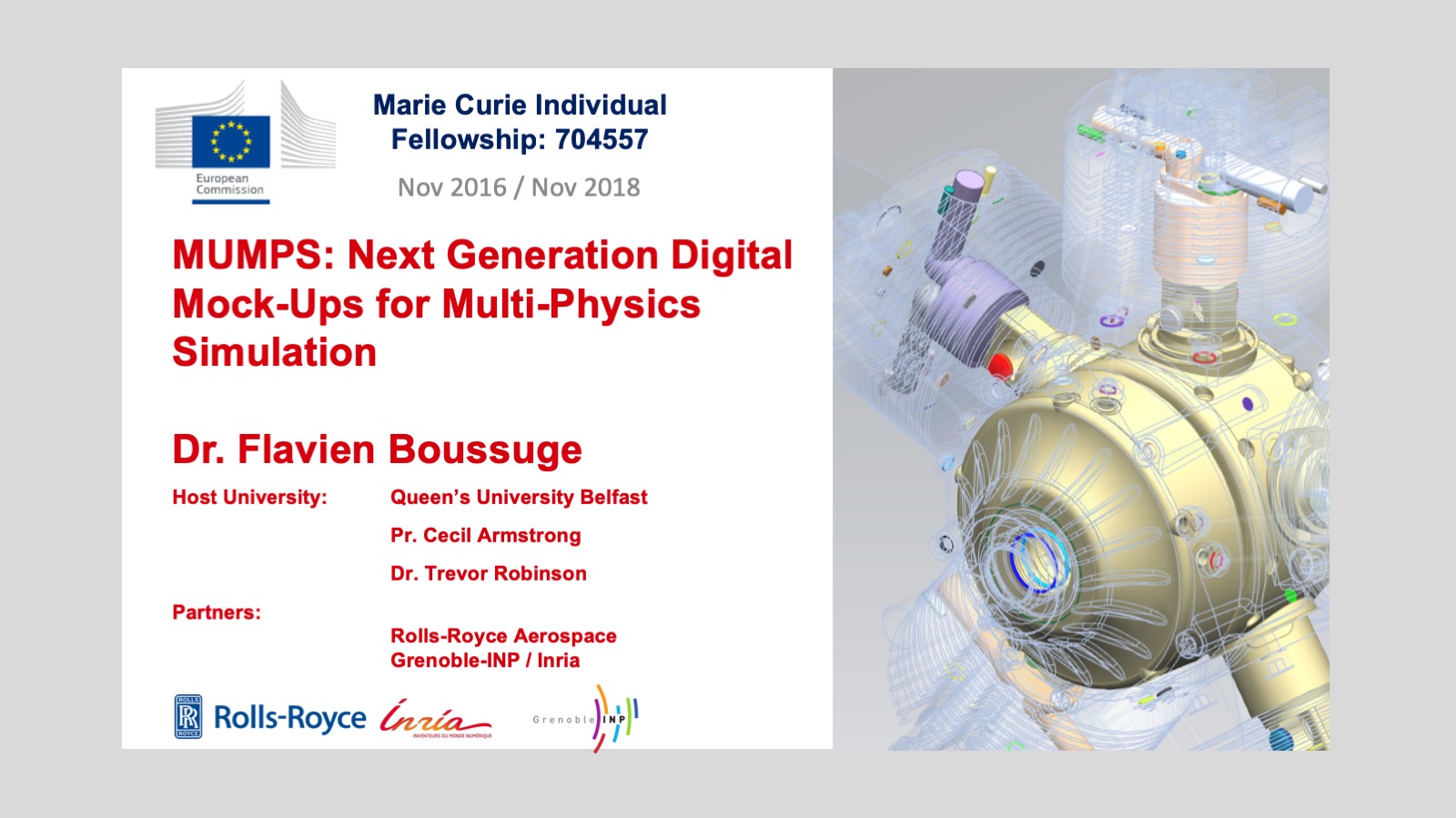
MSCA-IF MUMPS Next Generation Digital Mock-Ups for Multi-Physics Simulation
SUMMARY:
ACARE’s vision 2050 for aerospace requires technological leadership in terms of managing the complexity of multidisciplinary design and development. Computational Simulation is essential to meet these challenges, but setting up complex numerical simulations for large assembly structures is extremely time-consuming and requires highly-skilled engineers. Even though solve time is often used as a key performance indicator, model preparation is typically orders of magnitude larger that the solution time. The main objective of the MUMPS project was to explore the basis of the next generation of Digital Mock-Ups, where geometric models are structured to cover the entire design world, not only the physical parts but also the adjacent fluid domains. To link the geometric models, the interfaces between regions in the design space to the high-level modelling and idealisation decisions, we proposed a knowledge-based CAE framework. In this framework, to represent the next generation Digital Mock-Up, an ontology for defining simulation intent has been developed which incorporates two key capabilities, cellular modelling and equivalencing. Cellular modelling introduces the concept of cells, which subdivide the 3D space appropriately, and to which simulation attributes can be attached. Equivalencing maintains the link between different representations of the cells required for different analyses throughout the analysis lifecycle.
ACKNOWLEDGMENTS
This project was supported by the European Commission via the MUMPS project (704557), a H2020-MSCA-IF-2015 founding scheme.
List of Participants:
- Queen's University Belfast (Host University)
- Dr. Flavien Boussuge (Researcher)
- Prof. Cecil Armstrong (Supervisor)
- Dr. Trevor Robinson (Co-supervisor)
Partners:
- Grenoble University (Grenoble INP/INRIA)
- Prof. Jean-Claude Léon
- Rolls-Royce Aerospace UK
- Ed Green
An Ontology-based approach:
Firstly, an analysis tool based on relational machine learning has been developed to help analysts and designer to speed up the tedious tasks to identify and isolate the components of interest for the analysis of the CAD assemblies extracted from the PLM system. The user can identify duplicate components, or correct inconsistent models with misaligned parts or with poor-quality B-Rep geometry. Secondly, the consistent CAD assemblies are transferred into a cellular model where information on cell geometry is linked to simulation attributes and meshing strategies through the ontology concepts and relations. In addition, in a context of multi-dimensional modelling, a geometric-oriented tool has been developed to generate automatically equivalent 2D axisymmetric models from 3D CAD models. Finally, the enriched cellular model (linked to the knowledge database) defines the next generation Digital Mock-Ups. The analysts or designers can then request the cells of interest from their CAD/CAE systems. They can use pre-defined ontology rules to capture the high-level of modelling and idealisation decisions required to set up a fit-for-purpose analysis model. The simulation hypothesis, idealisation decisions relative to the physical scales, space partitioning, detail removal, etc., can be recorded and linked to the cell geometry and morphology. Applying the ontology rules with the reasoner enriches the CAE-oriented knowledge model and makes it available for the various CAD/CAE packages across the simulation departments. Using an ontology approach as the simulation intent framework makes it independent of CAD/CAE packages and allows the generated models to be shared by multiple simulation domains. This provides a mechanism to maintain multiple models at different levels of detail and fidelity and exploit the links between them.
Research Collaborations:
During this 24-month project, research collaborations have been developed between the Queen’s University Belfast Finite Element Modeling research laboratory and the Grenoble INP geometric modelling group, both leaders in the field of design/simulation integration. The researcher also intensively collaborates with the industrial partner Rolls-Royce UK who provided industrial state-of-the-art use-cases, trainings on simulation model generation, support from experienced analysts and valuable feedback on the developed methods and tools. The projects outcomes have been communicated to five European and international scientific and industrial conferences (ECCOMAS, International Meshing Roundtable, CAD and Applications, Airbus Dipart). Four scientific papers have been published or currently submitted to international journals. Two MUMPS workshops have been organised. The final review/workshop is planned for February 21st at Rolls-Royce Derby UK. It will bring together 20 participants from key EU companies, research institutes and universities to identify research opportunities toward the unification of models exchange for multi-physics simulation.
Demontration Videos:
Disseminations of the project results:
- Journals:
- Boussuge, Flavien, Christopher M. Tierney, Trevor T. Robinson, and Cecil G. Armstrong. "Symmetry-based decomposition for meshing quasi-axisymmetric components." Procedia Engineering 203 (2017): 375-387.
- Boussuge, Flavien, Christopher M. Tierney, Harold Vilmart, Trevor T. Robinson, Cecil G. Armstrong, Declan C. Nolan, Jean-Claude Léon and Federico Ulliana, “Capturing simulation intent in an ontology”, Journal of Engineering Design (submitted, in review second stage, considered for publication 2019).
- (collaboration with the GEMinIDs project) Tierney, Christopher M., Flavien, Boussuge, Trevor T. Robinson, and Cecil G. Armstrong. “Efficient Symmetry-Based Decomposition for Meshing Quasi-Axisymmetric Assemblies” Computer-Aided Design and Applications, Vol. 16, No. 3, 01.10.2018, p. 478-495.
- Conferences:
- Boussuge, Flavien, Christopher M. Tierney, Trevor T. Robinson, and Cecil G. Armstrong, “Application of relational learning for CAD/CAE integration”, Airbus DiPaRT 2018 – Bristol, 26- 28 Nov 2018.
- Boussuge, Flavien, Christopher M. Tierney, Trevor T. Robinson, and Cecil G. Armstrong ,“ Enriching Digital Mock-Ups with fluid domains”, European Congress on Computational Methods in Applied Sciences and Engineering - ECCOMAS - Glasgow, 11-15 Jun, 2018.
- Boussuge, Flavien, Christopher M. Tierney, Trevor T. Robinson, and Cecil G. Armstrong, “Enriching Digital Mock Up to speed-up simulation assembly models generation”, Airbus DiPaRT 2017 – Bristol, 20-22 Sep 2017.
- Boussuge, Flavien, Christopher M. Tierney, Trevor T. Robinson, and Cecil G. Armstrong, “Symmetry-based decomposition for meshing quasi-axisymmetric components”, Conf. Meshing RoundTable, Barcelona, 19-21 Sep, 2017.
- Boussuge, Flavien, Christopher M. Tierney, Cecil G. Armstrong, Trevor T. Robinson, Jean- Claude Léon and Harold Vilmart “Generating FE assembly models from enriched DMU”, IV ECCOMAS Young Investigator Conference, Milan, -, 13-15 Sep, 2017.
- Public events and collaborations:
- Participation to a MSCA Seminar to give feedback on the grant proposal application. (3.02.2017) Participation to a workshop in QUB to promote MSCA-IF fellowship. 30 mins presentation to share researcher experience and recommendation on the proposal writing.
- Collaboration with GEMINIDS project: participation to weekly web conferences, collaboration with Dr Tierney(QUB) on model preparation (1 paper presented at the CAD&A conference).
- Participation to the CAD and Applications conference, Paris, July 9-11, 2018.
- Helped an external applicant for a future MSCA-IF with QUB (call 2018).
- One-day seminar at French Alternative Energies and Atomic Energy Commission (CEA DAM). Presentation of MUMPS outcomes and future research on Relational Machine Learning.
